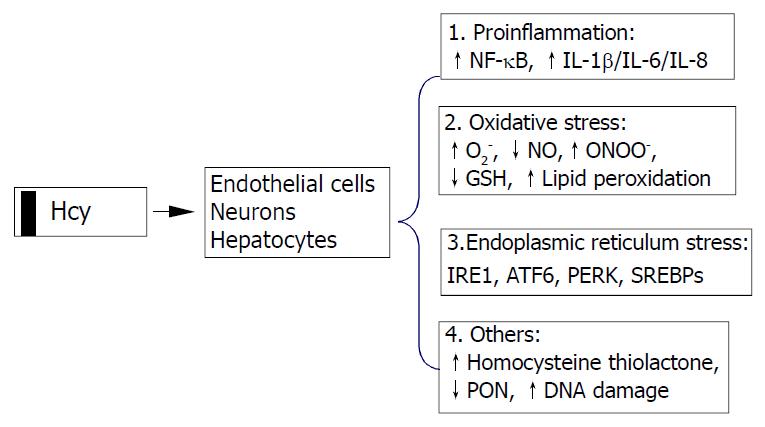Copyright
©The Author(s) 2004.
World J Gastroenterol. Jun 15, 2004; 10(12): 1699-1708
Published online Jun 15, 2004. doi: 10.3748/wjg.v10.i12.1699
Published online Jun 15, 2004. doi: 10.3748/wjg.v10.i12.1699
Figure 2 Cellular mechanisms by which homocysteine pro-motes cell injury.
Homocysteine causes activation of necrosis factor-κB (NF-κB) and enhances production of cytokines (IL-1β, IL-6, and IL-8) resulting in inflammatory reactions, increases intracellular levels of superoxide anion causing oxidative stress, and induces endoplasmic reticulum (ER) stress by causing misfolding of proteins traversing the ER. Homocysteinyl-tRNA increases production of highly reactive derivative homocys-teine thiolactone which damages enzymes and DNA. IRE1, type 1 ER transmembrane protein kinase; ATF6, the activating tran-scription factor 6; PERK, the PKR like ER kinase; SREBP, sterol regulatory element binding protein, PON, paraoxonase.
- Citation: Ji C, Kaplowitz N. Hyperhomocysteinemia, endoplasmic reticulum stress, and alcoholic liver injury. World J Gastroenterol 2004; 10(12): 1699-1708
- URL: https://www.wjgnet.com/1007-9327/full/v10/i12/1699.htm
- DOI: https://dx.doi.org/10.3748/wjg.v10.i12.1699









